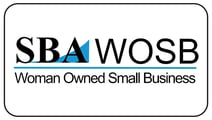Growing your LinkedIn first degree connections is one of the single biggest ways for someone to improve their career - whether it is a business looking to grow leads or an individual looking to advance their career. The following blog outlines how to grow your LinkedIn connections.
LinkedIn has become a powerful tool in today’s job search. If you don’t believe me consider these facts from Viveka von Rosen,author of LinkedIn Marketing: An Hour a Day, contributing “expert” to LinkedIn’s official “Sophisticated Marketer’s Guide” and known internationally as the “LinkedIn Expert”. She is the CEO of Linked Into Business and co-founder of LinkedIn Prospecting, and she also hosts the biggest LinkedIn chat on Twitter. With 30,000+ first level connections and a network of over 38 million people on LinkedIn, and 58,000+ followers on Twitter, her seminars, webinars and workshops have taught and trained well over 90,000 people including The Frontier Group how to leverage LinkedIn for their job search and business:
- LinkedIn is the largest business-focused social media site.
- LinkedIn has evolved into becoming the central recruiting database for organizations of all sizes.
- 98% of companies and recruiters utilize LinkedIn.
LinkedIn is an evolving and increasingly important element in career management. The number of first degree connections is becoming a more important factor in driving personal search results.
First degree connections provide you e-mail and possibly phone contact information to help you directly communicate. While job seekers should have a large quantity and quality of first degree connections, many job opportunities are a result of second and third degree contacts.
Second degree connections provide opportunities to connect to others through a common (or multiple) set of reference points (no “cold calling”).
These important facts should inspire you to update your profile and start building your connections. So how do you get started? Here is where LinkedIn comes in. LinkedIn gives you all the tools you need to reach out and engage with people through:
- Invitations
- Introductions
- Messages
- InMails
Invitations
Your first option is to invite a new contact to connect. When possible, always include a personal note and indicate the reason why you want to connect with the person. This approach is more professional and your chance of connecting is much improved. Many people won’t even open an invitation unless there is a personal note. Another option is to use the “people you may know” function on LinkedIn to connect with second and third degree contacts. A great approach is: “Dear Name. LinkedIn thinks we should know each other. I'm interested in your field or we are members of SHRM (state whatever you have in common by reviewing their profile). I'm trying to expand my network and hopefully you will accept my invitation. I look forward to connecting with you. Best Regards, Your Name. ”
Introductions
Asking for an introduction from a first level connection is another option to purse. To quote Viveka von Rosen “An introduction, if it gets passed along, does not mean that you are connected, but it does mean that you can now engage with that person. (Plus you’ll get their email address, and sometimes their phone number.) The Get Introduced link can be found in the dropdown to the right of Send InMail. So if you don’t have the blue Connect button, or even if you do but you don’t want to just invite that person to connect, you can just click on the dropdown arrow and you’ll see the option to Get Introduced. Once you click on that a new page pops up and you’ll see the people you have in common. Choose the person that you feel most comfortable with to be the Introducer”.
Connecting Through Groups
Joining industry and professional groups is another avenue to identify possible connections. If you are a member of the same group, you can send the person a message through the group and ask them to connect. Again, share the reason why you want to connect with them. Another option is to send the person an invitation stating why you want to connect and ask if they are willing to connect with you. If you receive a favorable response, you can then reach out and send a message to connect through the group. Personally, I am much more willing to connect with someone through LinkedIn when the individual provides a reason for their request.
InMails
This would be the least recommended approach and best reserved for recruiters or when all else fails. With a free account, InMails are $10 each. With a premium job seeker account, you receive 3 free InMails.
As you expand your contacts, remember the main objective is to cultivate a relationship prior to delivering your marketing pitch. Don’t begin the relationship by talking about “you” and what “you” want. Networking and expanding your professional contacts is all about building and nurturing true relationships.
Paula Pope is a Senior Consultant with The Frontier group. She has over 25 years of human resources management experience in the retail sector. Paula's specialties are career coaching, outplacement and EQ Leadership training. She can be reached at paulap@frontiergroupusa.com.
![]()



